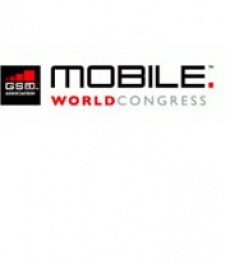Thankfully less crowded and frantic than previous years, the annual jamboree of the European, and increasingly the Asian, mobile industry in Barcelona threw up the usual amount of curveballs when it comes to predicting the future.
Trying to collect all those Google Android badges provided some welcome relief too.
But here are some key trends to consider.
1. It's harder for hardware to matter
The basic form of the smartphone is now fixed as a large candy touchscreen device, perhaps with a number of fixed screen buttons. This provides little opportunity for physical differentiation.
The increasing use of purely invented terms such as Retina screen or technical jargon such as Super AMOLED or quad-core - not to mention the last gasp of the silicon makers: GHz - demonstrates that Western OEMs understand their breakfast and dinner is now being eaten by cheap and cheerful Chinese competitors.
Sure, their build quality isn't Nokia, but it's good enough and getting better fast.
Expect more examples of hardware differentiation such as Sony Ericsson's Xperia Play, Samsung's "thinnest smartphone ever" claims, or even the return of QWERTY sliders to emerge in the attempt to reinforce handset prices.
2. The rise of soft power
Because hardware is quickly becoming commoditised, software is the major differentiator for smartphones.
Of course, some of this is already lowest common denominator - every handset comes with Facebook, Twitter, chat, and the usual array of social/media apps. Equally, every device comes connected to its own app store; many now have three or more embedded sales channels.
Hence OEMs are looking to tie up exclusives. Pre-installed games work well in this regard, as does the ability to have your own user interface.
HP's TouchPad was impressive because webOS is impressive, while the BlackBerry PlayBook looks dated because TaT, the UI specialists RIM bought in late 2010, haven't had a chance to rip it up yet.
Nevertheless, it's services where real differentiation and profits will be made. No wonder Nokia's gone for Microsoft including Xbox Live, Sony Ericsson has PlayStation Network, and HTC's invested in OnLive.
3. Which would Moses write on?
Keen not to let Apple write the design commandments for yet another market, tablet makers are desperate to provide some alternatives to the 9.7-inch screen diagonal standard but 5-inches seems too small, and 7-inches too shallow unless you can squeeze in 768 pixels depth.
Hence LG's Optimus Tab is a widescreen 8.9-inch, while Samsung's latest Tab has expanded upwards being 10.1-inches. Acer's just gone for broke and come up with a monster in terms of size and heft.
Still, a home button, orientation lock, volume rocker and power button already appear to be set in stone. At least, everyone other than Apple can stand out with slots (USB/memory card etc). And thank Steve for the comparative advantage of Flash.
However, the tablet question has always boiled down to price.
Again, Chinese OEMs will have some better than average products sub-$250, rumours suggest Acer could launch at a surprising $350, while the likes of HP, Samsung and RIM say their products will be "competitive" i.e. meaning not much more expensive than iPad.
But with its $50 billion cash pile, Apple can always afford to both subsidise, bulk buy components, and innovative in a way that should ensure it retains market domination in a way it never could with iPhone, especially if it builds out a price point family as it managed with iPod.
4. I am the resurrection
Despite the two previous trends, there is still hope for two companies currently perceived as also-rans. Both RIM and HP impressed at MWC, especially in terms of their respective tablets - BlackBerry PlayBook and TouchPad.
The PlayBook is perhaps the more interesting in terms of size (smaller, thicker and more serious than iPad), but it's the use of new operating systems - QNX for PlayBook and webOS 2.0 for TouchPad - that make them stand out from the Android Honeycomb crowd.
More importantly, both companies' focus on user interface (webOS is great, and QNX will be when TaT is through with it), should ensure the devices play and work well for the Western audience in a way the already-commoditised Android 3.0 won't.
And don't moan about the lack of apps. Tablets are very different to phones in terms of the number of apps required (less than 100), and what really matters about them (usability, robustness, security).
5. Nokia and Microsoft; learning to fly or voting for Christmas?
There was less talk of those two turkeys Nokia and Microsoft than expected at Mobile World Congress, perhaps because for the second year in a row Nokia wasn't officially attending the show.
It's also the case that most people seem to recognise Nokia didn't have any other viable option, and the deal will give Microsoft an install base it would never have gained with its previous piecemeal approach.
But the wider issue is that the industry can't afford to let them fail.
Operators hate Apple and Google is already flexing its muscles in terms of the Android OS and its Market. Without a strong Nokia, operators know their last position of strength - billing and customer relations - will be undermined by the web companies.
6. And we didn't really mention Apple
Not really a key trend, as Apple has never attended Mobile World Congress, but with its future iPad and iPhone devices still be announced, the show could have been subtitled as the Mobile Industry Strikes Back, in terms of the quality, cost and functionality of non-Apple devices being offered.
Clearly, 2011 will see Apple's market share of smartphones and tablets dramatically reduced.
Five key trends we condensed from Mobile World Congress 2011
Hardware meets soft power























